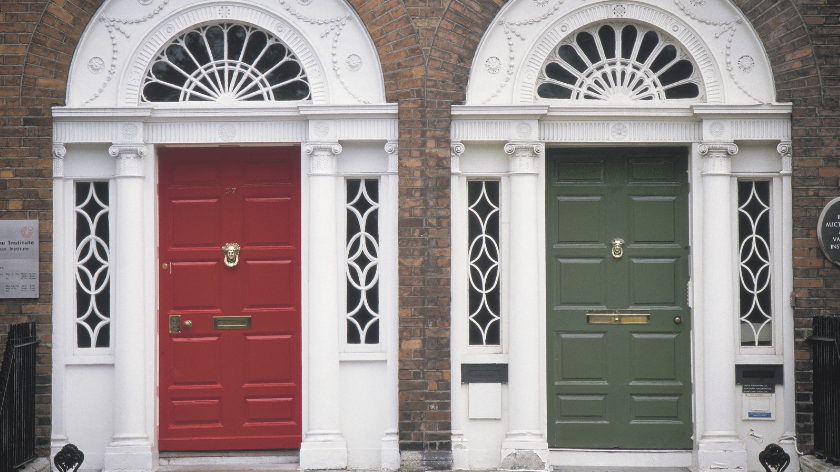
If you've recently read our blog post about the best ways to change the colour of uPVC windows, then you'll be familiar with the topics we'll be discussing today, because to change the colour of uPVC of any kind (uPVC windows and doors, uPVC guttering and fascias, etc) you have three main options.
Of course, there are some key differences between how someone would change the colour of uPVC windows compared to uPVC doors. So, if you want to learn more about how to change the colour of your uPVC door, then you're in the right place.
Before we jump into the main techniques, though, let's look a little more about why changing the colour of uPVC windows and doors is a little trickier than people first realise...
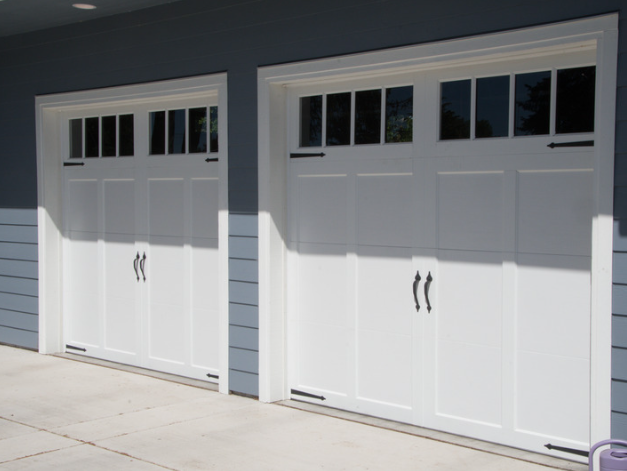
There are many things you need to consider about uPVC as a material to understand why changing the colour of uPVC window frames and door frames is more complicated.
It isn't like wood, which can easily be painted over time after time. It's far more complicated with uPVC windows and uPVC doors.
Let's explore some of the barriers you might face if you want to change the colour of your uPVC doors and windows...
It doesn't matter if your changing the colour of uPVC windows, uPVC doors, or an entire uPVC conservatory - the uPVC used in the manufacturing process is all treated the same way, and this could potentially put a stop to your plans to change its colour.
If your new uPVC front door, for example, is less than 12 months old, then none of the techniques we'll discuss today will work. Why?
Because for up to 12 months after the uPVC door or window has been made, it secretes resin from the manufacturing process, and this resin will stop you painting uPVC, liquid dipping uPVC, or vinyl wrapping it (all techniques we'll introduce you to later, if you are unfamiliar).
So if your uPVC doors and windows are less than 12 months old, you'll have to wait until you can change their colour.
Even after those 12 months, uPVC is still difficult to work with as a material. The plastic surface is difficult for anything to adhere to.
Paint bonds much easier to other materials, for example, so if you opt to paint uPVC windows and doors, then you'll need to use a special uPVC paint, uPVC primer, and do some surface preparation to make it more susceptible to paint.
Even the other methods we'll discuss below might be difficult, because the plastic surface of the uPVC is especially unforgiving. Unless you know what you're doing, of course.
You will always need to consider thermal expansion for any door or window you change the colour of, not just uPVC doors and windows.
When windows and doors are exposed to weather conditions constantly, and the ambient temperature changes regularly, then you'll need to think about this before a colour change.
Failure to use the right paint whilst painting, or applying the liquid dip or vinyl wrap during the wrong type of weather can lead to a terrible finish, or the colour change not working at all.
For an amazing job, we would always recommend contacting professionals who can carry out the work for you and know when it's best to paint/dip/wrap your doors and windows.
The reason many people want to change the colour of their white uPVC windows and doors is because they want to increase their kerb appeal in a way that is low maintenance and cost effective.
Unfortunately, if uPVC paint is applied in the wrong way during a DIY attempt, then you can be left with cracked or peeling paint that looks awful.
If you want good quality results and want to avoid unsightly brush marks, peels, or cracks for a reasonable price from a business that offers uPVC spray painting for uPVC doors and windows with a huge range of popular colours in our colour scheme of uPVC paint, then why not contact us here at Sketch Spray today. We'd be happy to help you completely transform your home's exterior.
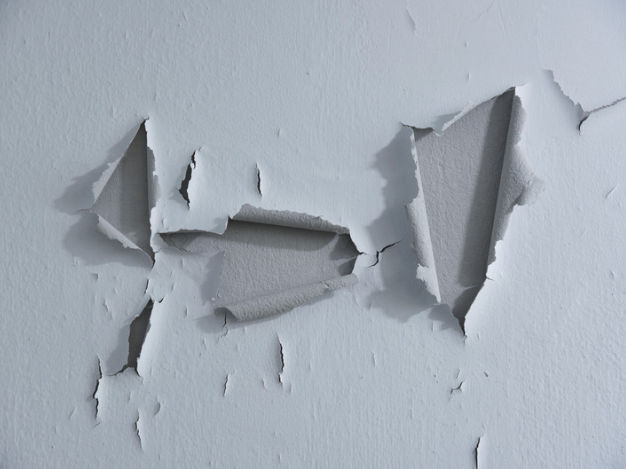
If your uPVC garage door or uPVC front door is south facing, then you'll need to be especially aware of UV rays.
You'll need to make sure that any products you use to change the colour of your uPVC window frames or uPVC doors that are south facing are resistant to UV rays so there isn't any fading or damage caused by the sun.
This will result in the best possible finish and also help create a finish that is long lasting and durable.
Wanting to change your uPVC doors or uPVC windows colour is only natural. After looking at white uPVC for so long, you're bound to wonder what brown uPVC windows would look like on your house, or whether an anthracite grey uPVC door would make your house stand out from those around you.
But DIY is difficult.
uPVC windows sprayed by non-professionals, uPVC doors with liquid dip done by yourself, or a uPVC garage door that's been vinyl wrapped by an amateur will never look as good as it could have done if you had hired professionals.
That's not to say DIY is impossible for the three methods of changing the colour of your uPVC windows and doors we'll discuss below - it's just not recommended for most.
If you read our previous post about changing the colour of uPVC windows, then you'll be familiar with the three methods below.
If not, then let us introduce you to them, before revealing the biggest differences between changing the colour of uPVC windows vs uPVC doors, and later reveal which method we here at Sketch Spray recommend, and can help you with.
Liquid dip simply involves applying a rubber coating to the uPVC door. This rubber coat is available in a range of colours and can be applied using a spray can. The best part is, it's been specifically designed to adhere to plastic surfaces like uPVC with no surface preparation.
Since you aren't painting uPVC doors here, there isn't any risk of brush marks. That doesn't mean you'll get the perfect finish, though.
The rubber coat has a tendency to bubble up, and over time, even after it's fully cured, it can still be knocked off easily by mistake. That's because the rubber coat can simply peel off the uPVC door.
It's great for people who make a mistake whilst applying it to windows and doors, since you can peel it away very easily before it has a chance to fully cure. But it can still come off easily after this point, making it ill-suited to a uPVC front door or back uPVC door because people use it all the time and the rubber coat can accidentally come off because of friction and movement.
Overall, the liquid dip technique isn't ideal for your uPVC door, and it's quite expensive too.
The vinyl wrap method is another alternative when you want to change the colour of uPVC windows and doors. However, this method is not the best option, especially for doors.
Vinyl wrapping involves wrapping your windows and doors in an adhesive vinyl material (that's available in a range of colours) specifically designed to stick to uPVC surfaces. They transform the look of your property instantly, and they're relatively low maintenance once they're on, since the adhesive is so powerful on the plastic surface.
For the perfect finish here, you would need to hire someone to do it for you, and even if you find someone with experience for a reasonable price, labour costs will be high for this method compared to spray painting uPVC windows and doors.
There's no surface preparation required here, but vinyl wrapping your uPVC windows alone will take around 4 days, and uPVC window frames are much easier to wrap than doors. Your doors, even though there are less of them, are more complicated to wrap, so you can expect it all to take around 5-6 days.
Using vinyl wrap for your uPVC windows and doors isn't the worst method you could use, but it will cost you substantially more than if you opt to spray paint uPVC doors and windows instead.
Painting uPVC is absolutely the best option. Spray painting your uPVC window frames and door frames will take no time at all compared to the other methods above - even with the surface preparation required beforehand.
Yes, the surface will need to be lightly abraded with a fine sandpaper beforehand to create an area that's ready for a colour change so the special uPVC paint can adhere to it better. And yes, you will need to apply a primer coat first, and possibly two coats of paint thereafter to make sure the colours pop. But even after all that, it'll still cost less time and money to paint uPVC doors and windows rather than liquid dip or vinyl wrap them.
There are a range of finishes available to you when you paint uPVC doors and windows too. From satin finishes to matte ones, we here at Sketch Spray can discuss the best paint with you for your property to help turn your old, boring white uPVC into a showstopper on your street. We can also provide you with almost any British standard colours when painting your uPVC window frames and door frames, so you can really personalise it to suit you.
Spray painted uPVC windows and doors will transform your house in an instant, and it's a relatively easy and quick job too when you entrust it to professionals with vast experience like us!
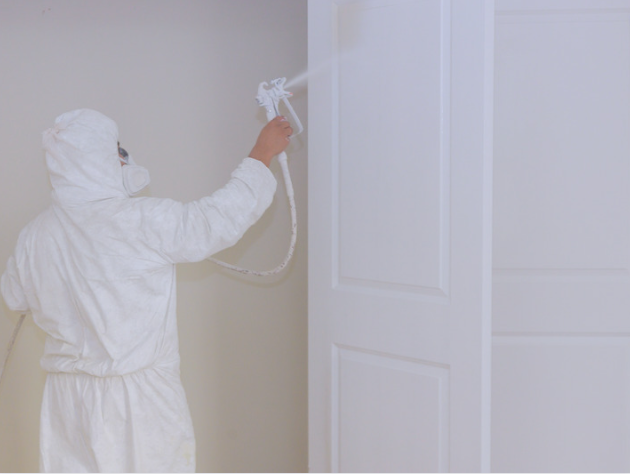
Of course, if you read our previous post looking at uPVC windows, then it's important for you to know that there are some differences between windows and doors when changing their colour using any of the methods above.
It's important that you're aware of this before you decide on how you want to move forward. Perhaps you could spray just your uPVC windows and leave the doors. Or maybe doing all of your windows and doors isn't necessary and perhaps you could focus on your uPVC front door and windows at the front of your house first to split the cost.
Either way, this is how changing the colour of your uPVC doors differs from your windows.
For a good quality finish, dipping, wrapping, or painting your uPVC door will take much longer than with your windows.
That's because a door has more intricate designs than a window will. That makes the job a little more complicated, especially with vinyl wrap. But even when painting or spraying the area with a rubber coating when liquid dipping, the raised sections and diverts make the process a little more time-consuming.
Your windows could all be sprayed to transform your house in a much shorter time compared to your doors.
One reason for the more time-consuming job is also just the larger surface you've got to cover. That means more money on materials.
A painted window, for example, will require much less uPVC paint than a door, simply because there are less elements to paint. Your uPVC door won't have as much glass, meaning everything around it will need painting to change its colours.
This increases the cost of materials, making painting, wrapping, or dipping uPVC doors much more expensive.
And finally, when you consider that every job will be more time-consuming and need more materials when dipping, wrapping, or painting uPVC doors different colours, then you have to be prepared for an increase in labour costs too.
This drives up the price of changing a door's colours compared to a window, making the job just that little more expensive.
Of course, you might just be thinking about replacing your doors and windows rather than going through the hassle of changing their colour in the first place - but this isn't a great idea.
If your uPVC doors and windows are perfectly fine, but it's just the colours you're not liking at the moment, then choosing to change their colour rather than pay for entirely new doors will save you a lot of money.
Not only that, but changing the colour of your doors and windows will increase your property value and make your house stand out from the rest of those around you. Trust us, it's a job worth doing.
Of all the options we've discussed today, spray painting your uPVC windows and doors is by far your best option - and we here at Sketch Spray can help!
It'll ultimately cost you less money, provide a more satisfying, personalised finish, and can all be done much quicker than if you choose to vinyl wrap or liquid dip your doors and windows. Better yet, the results are more durable too, so you'll get a long-lasting, smooth finish for less time and money than the other options.
It just makes sense to have professionals spray paint your uPVC doors and windows, right?
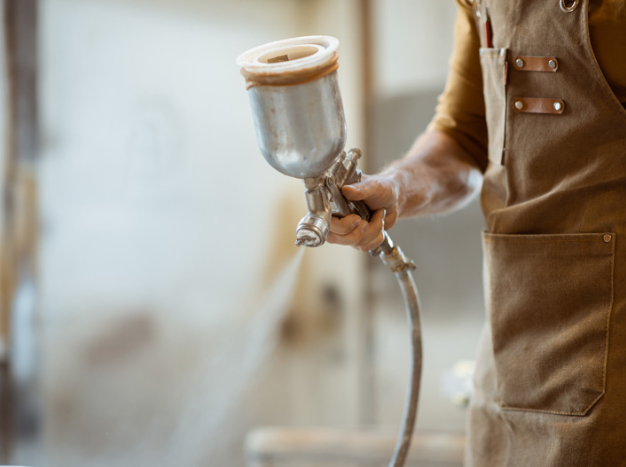
If after reading our two articles about changing the colour of your uPVC doors and uPVC windows you're considering painting your uPVC, then reach out today.
We here at Sketch Spray are experienced professionals and offer a wide range of spray painting services for commercial and residential properties. If you need someone you can trust to provide excellent results quickly, then we're perfect for you.
Get in touch today and we'll provide you with a free quote for your home or business! We look forward to hearing from you.